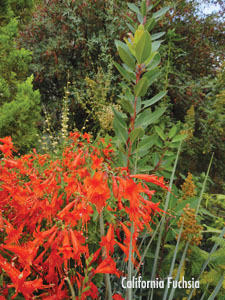Get Your Chi Flowing
28 Sep 2011
Here are simple ways to incorporate feng shui into your garden.
By Julie Hauser Feng shui is an ancient Chinese philosophy of form and placement that helps to improve the flow of chi (also qi)—the universal life force. In the Western world, we’ve mostly heard of feng shui in home design, but the Chinese use feng shui first and foremost for landscaping. In fact, the exterior is far more important than the interior. If you have feng shui problems outside your home, no amount of cures inside will remedy it. A feng shui garden strives to achieve balance and harmony, and raise auspicious energy levels. The landscape is what we and visitors first experience at our home, so it makes sense for this space to be welcoming and calming. Feng shui garden design has three basic concepts: energy flow or chi, the balance of the yin (female) and yang (male) energies that make up chi energy, and the balance of the five elements: earth, metal, water, wood and fire. The landscape elements of feng shui are mountain, vegetation and water, which can be represented in the gar- den by rocks, plantings and water features.Flow & Balance
You can increase the chi in your garden with gently flowing paths and curves. The idea is to allow energy to flow smoothly throughout your site, rather than having it run abruptly into obstacles. Right angles are not recommended, as they stagnate the energy flow. Yin and yang are opposites, e.g., good and evil, dark and light, female and male, low and high, cold and hot. In Chinese philosophy, feng shui supports this duality. The goal is to achieve balance between the yin and yang energies, meaning that no element overpowers another. For example, plants and a water feature can balance a large amount of stone that could overpower a landscape, making it feel heavy. Just make sure the water flows toward your home and never away. Water that flows away from your home is said to carry your wealth and finances with it. If you don’t want a water feature because of maintenance or cost concerns, you could create the impression of water with a stream of river pebbles or rocks.The Bagua
The bagua is an “energy map” with eight sides and nine directions that correspond to colors and elements. At the top of the bagua is the direction south, represented by fire. It’s the direction of fame, representing dreams, aspirations and opportunity. The color connected to south is red. To represent these elements in the garden, you can add fire pits, barbecues and red flowers in the south. Southwest is represented by earth. It’s the direction of marriage, representing love, relationships and partners. The color connected to southwest is pink. To represent these elements in the garden, add benches, dining areas, spaces for outdoor activities and greenery in the southwest.
West is represented by metal. It’s the direction of children and creativity, representing community, entertaining and harvest. The color connected to west is white. To represent these elements in the garden, add play areas, outdoor entertainment spaces and healing gardens in the west.
Northwest is the direction of helpful people and travel, representing trade, mentors and international travel. The color connected to northwest is gray. To represent these elements in the garden, add garden statues, wind chimes and arches in the northwest.
North is represented by water. It’s the direction of career, represented by inspiration, growth and new ideas. The color connected to north is black. To represent these elements in the garden, you can add ponds and hot tubs in the north.
Southwest is represented by earth. It’s the direction of marriage, representing love, relationships and partners. The color connected to southwest is pink. To represent these elements in the garden, add benches, dining areas, spaces for outdoor activities and greenery in the southwest.
West is represented by metal. It’s the direction of children and creativity, representing community, entertaining and harvest. The color connected to west is white. To represent these elements in the garden, add play areas, outdoor entertainment spaces and healing gardens in the west.
Northwest is the direction of helpful people and travel, representing trade, mentors and international travel. The color connected to northwest is gray. To represent these elements in the garden, add garden statues, wind chimes and arches in the northwest.
North is represented by water. It’s the direction of career, represented by inspiration, growth and new ideas. The color connected to north is black. To represent these elements in the garden, you can add ponds and hot tubs in the north.

- Natural features like rock, stone, vegetation and water are fundamental landscape elements of feng shui. Photo by Marpa Landscape Design Studio















